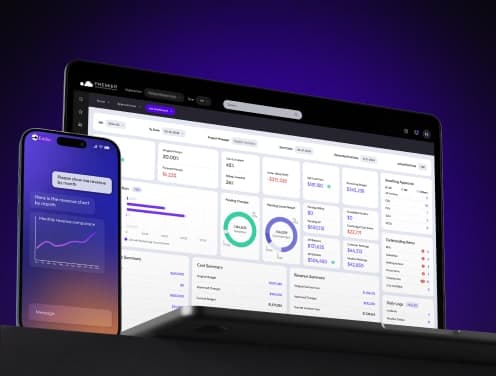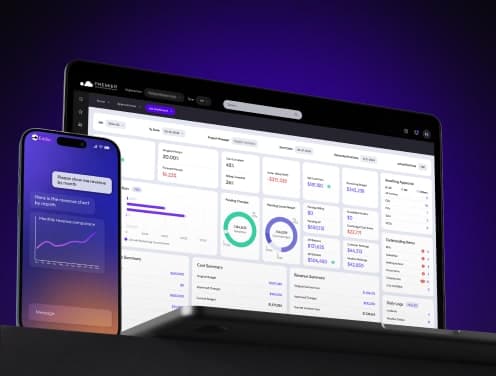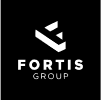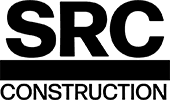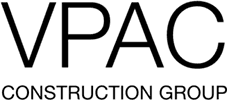
What is Construction Management? A Comprehensive Overview
Projects in construction fail 85% of the time without proper systems and processes.
Construction management blends technical expertise with strategic planning and leadership skills. Project teams use this approach to guide construction from concept to completion. Teams can deliver projects on time and within budget while meeting quality standards.
Technology has substantially changed modern construction management. Project managers use specialized construction management software solutions like Premier Construction Software. These tools help streamline processes and improve communication with immediate progress tracking. Digital tools have turned traditional management methods into analytical decision-making systems.
This detailed guide explores everything in construction management. You'll discover core principles, project planning, risk management, and environmentally responsible practices. Good construction management helps reduce costs and minimize delays that lead to successful project outcomes.
Fundamentals of Construction Management
Construction management works through a well-laid-out framework of connected components and relationships. A systematic approach to planning, executing, and controlling construction projects creates its foundation.
Core Components and Principles
Construction management blends technical oversight with strategic planning to deliver successful projects. Project planning, resource allocation, and quality control systems make up the core elements. Project oversight falls into two main categories - direct stakeholders who actively participate in project execution, and indirect stakeholders who feel the effects of the construction process.
A successful construction management framework needs:
● Clear project objectives and scope definition
● Resource optimization and allocation
● Quality control and compliance systems
● Risk assessment and mitigation strategies
Project Life Cycle Stages
Construction projects follow distinct phases from conception to completion. Each phase requires specific focus and deliverables:
1. Initiation Phase: Project feasibility analysis and stakeholder identification
2. Planning Phase: Development of complete project plans and resource allocation
3. Execution Phase: Active construction and implementation of plans
4. Monitoring Phase: Progress tracking and performance assessment
5. Closure Phase: Project completion and documentation
Key Stakeholder Relationships
Stakeholder management creates the foundation of successful construction projects. Owners, construction managers, contractors, architects, and procurement teams represent direct stakeholders. These teams work together to achieve project objectives.
Clear communication builds strong stakeholder relationships. Project momentum stays strong when teams share updates and information openly. Research shows that relationships built on trust lead to cost savings, faster project delivery, and better risk control.
Premier Construction Software makes shared stakeholder collaboration possible through integrated communication tools and live project tracking capabilities. Teams work better together and achieve improved project outcomes through this digital approach.
Project success depends heavily on identifying stakeholders and meeting their expectations. Project managers should create strategies to understand stakeholder interests and manage them effectively throughout the project lifecycle.
Digital Transformation in Construction

Digital technology has changed construction management through advanced solutions. Construction companies that use digital tools see positive returns on their investments in 75% of cases.
Modern Construction Software Solutions
Construction management software makes project execution easier with integrated digital tools. These platforms come with complete features:
● Task and schedule management
● Document control systems
● Budget tracking and cost analysis
● Team cooperation tools
● Resource allocation tracking
Premier Construction Software shows what modern solutions can do by combining AI-powered analytics with complete project management capabilities. The platform uses automated decision-making and predictive forecasting to make construction operations better.
Building Information Modeling (BIM)
BIM technology creates intelligent 3D models that show physical and functional characteristics of construction projects. Teams can see their projects clearly before breaking ground with this digital representation.
BIM integration brings several benefits:
● Better cooperation between contractors and designers
● Quick spotting of potential issues
● Less need for rework
● Better project visualization
The technology helps share knowledge throughout a building's lifecycle, from planning to maintenance. BIM adoption has become mandatory for public infrastructure projects in several countries, which shows how important it has become.
Data Analytics and Reporting Tools
Construction analytics turn raw project data into practical insights. All but one-third of global projects stay within 10% of their budget. This makes informed decision-making vital.
Modern reporting tools provide:
● Live project tracking
● Automated data collection
● Performance metrics analysis
● Predictive modeling capabilities
These analytics tools help construction managers spot potential risks before they become expensive problems. Teams can track everything from equipment use to safety compliance through integrated reporting systems. This supports better decisions at every project stage.
Digital platforms have removed old communication barriers by giving teams live updates and central information access. This change has transformed how construction teams cooperate, plan, and execute projects.
Project Planning and Control

Project delivery success depends on exact planning and strict control systems. Construction managers must coordinate multiple elements and keep strict oversight of budgets, schedules, and quality standards.
Budget Development and Cost Control
Construction projects go over budget often, with only 25% staying within 10% of original estimates. Budget control works best with constant monitoring and quick fixes. Premier’s construction accounting software provides automated tools that track expenses and highlight what it all means before problems grow.
Budget management needs these key steps:
1. Define clear cost objectives and performance indicators
2. Implement systematic cost tracking procedures
3. Compare actual versus planned expenses regularly
4. Document and analyze any variances
5. Take immediate corrective action when needed
Schedule Management Techniques
Schedule management is the project's backbone that determines task sequences and resource allocation. Construction schedulers must anticipate challenges and adjust plans to keep project momentum.
These scheduling approaches work well:
● Critical Path Method (CPM) for complex projects
● Line of Balance (LOB) for repetitive tasks
● Resource-oriented scheduling for supply-chain focused projects
● Gantt charts for visual project tracking
The best schedules show the project team's ground truth and need frequent updates. Digital scheduling tools enable live collaboration and progress monitoring across all stakeholders.
Quality Assurance Systems
Quality Assurance (QA) creates systematic processes to maintain construction standards and prevent defects. This hands-on approach cuts rework costs and improves overall project outcomes.
QA implementation brings multiple benefits like better quality control, improved project management, and lower rework expenses. Construction teams should prioritize quality workflows with clear ownership and accountability.
Regular inspections, audits, and compliance checks are the foundations of effective QA systems. Teams should document all quality control activities and keep detailed records of issue resolution. This documentation creates an audit trail and helps continuous improvement efforts.
Digital tools make QA processes efficient through automated workflows and live reporting capabilities. These systems help construction managers spot potential issues early and fix them quickly.
Risk Management Strategies
Construction projects come with major risks that need careful oversight and smart management. Research shows that construction projects are inherently complex and need coordination between many stakeholders.
Common Construction Risks
Project managers need to handle several risk categories that affect their success. The most important risk areas are:
● Money problems from budget overruns and late payments
● Safety hazards and workplace accidents
● Supply chain disruptions
● Weather-related delays
● Contract disputes and legal issues
● Labor shortages and workforce challenges
Premier Construction Software helps teams spot and track these risks through built-in monitoring systems. The platform's analytics can detect problems early before they turn into bigger issues.
Mitigation Planning
A solid risk plan starts with good identification and assessment. Teams that use detailed risk management plans get better results. Good mitigation needs:
1. Early problem detection through data review
2. Regular site checks and safety audits
3. Clear communication rules
4. Records of all project activities
5. Ongoing tracking of project metrics
Digital tools make risk tracking easier with live updates and automatic alerts. This tech-based approach helps managers see patterns and fix potential problems quickly.
Insurance and Legal Considerations
Insurance forms the foundation of construction risk management. Essential coverage types range from general liability to workers' compensation and builder's risk insurance. Local laws often require specific insurance for construction projects.
Legal risk management must focus on:
● Contract paperwork and compliance
● Regulatory requirements
● Safety standards
● Environmental regulations
Project managers should keep detailed records of everything that happens. These records become a great resource during disputes or claims. Digital platforms provide secure storage and quick access to important project files.
Professional liability coverage guards against claims about design errors or professional mistakes. Teams should check and update their insurance regularly to stay protected against new risks.
Risk management software works together with project control systems to create a single approach to risk prevention. This tech solution helps construction managers watch for issues across many projects while following all regulations.
Sustainable Construction Practices
Green practices are the life-blood of modern construction management. Buildings account for nearly 40% of global energy-related CO2 emissions. Construction management now requires new approaches to protect the environment.
Green Building Standards
LEED (Leadership in Energy and Environmental Design) certification is the world's most accessible green building rating system. The system reviews buildings across multiple sustainability metrics:
● 35% of credits relate to climate change
● 20% affect human health directly
● 15% affect water resources
● 10% influence biodiversity
● 10% connect to the green economy
● 5% affect community resources
Buildings built to LEED standards create 50% fewer greenhouse gases from water consumption and 48% fewer emissions from solid waste. Premier Construction Software backs these green initiatives through specialized modules that track sustainability metrics and environmental compliance.
Environmental Impact Assessment
Environmental Impact Assessment (EIA) helps evaluate construction projects' environmental effects. Local planning authorities use this process to make informed decisions about project approvals.
The EIA process follows these essential steps:
1. Project screening and scope definition
2. Environmental baseline assessment
3. Impact prediction and evaluation
4. Mitigation measure development
5. Documentation and reporting
Construction managers should review various environmental factors during assessment, including water pollution, air quality, noise levels, and ecological impacts. Digital management systems make this process easier by automating data collection and analysis.
Resource Optimization Methods
Resource optimization in construction aims to minimize waste while maximizing efficiency. Construction sites can reduce material waste by up to 30% through green resource management techniques.
Green construction uses several key strategies:
● Material Selection: Using eco-friendly materials like green concrete and low VOC paints
● Waste Reduction: Using prefabricated construction methods to minimize on-site waste
● Energy Management: Adding energy-efficient systems and renewable energy solutions
Digital transformation plays a vital role in resource optimization. Construction management software cuts paper waste through digital documentation and provides immediate tracking of material usage. These platforms help construction teams track sustainability metrics and stay compliant with environmental regulations.
Green practices bring significant benefits. LEED-certified buildings show better energy efficiency, lower operational costs, and improved occupant well-being. Construction managers can create environmentally responsible and profitable structures by applying green building standards, environmental assessments, and resource optimization methods systematically.
Conclusion
Construction management has evolved beyond simple oversight. Today, it's a sophisticated discipline that makes use of technology and analytical insights. This piece highlights everything in successful construction projects.
Modern construction teams depend on digital tools to handle complex projects well. Premier Construction Software serves as an excellent example that provides integrated tools for project planning, risk management, and sustainability tracking. These tools help teams tackle the industry's biggest challenges - from budget overruns to stakeholder communication.
Construction managers who excel in these areas achieve soaring wins:
● Strategic project planning and execution
● Digital tool implementation
● Risk assessment and mitigation
● Eco-friendly building practices
● Stakeholder relationship management
Technology and environmental awareness push the construction industry forward. Teams that blend proven management principles with modern software solutions see higher success rates. Construction professionals who adopt these changes lead industry progress.
Traditional expertise and emerging technologies shape construction management's future. Projects become more complex each day. This makes systematic approaches and digital solutions crucial. Smart construction teams understand this transformation and adapt their methods.
